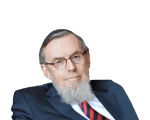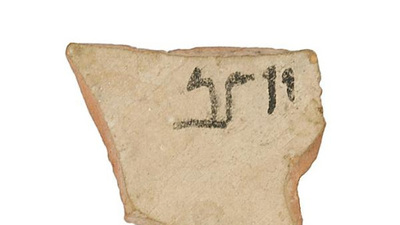In these difficult days in which we find ourselves, I am often reminded of the works of Colombian author Gabriel Garcia Marquez (1927-2014). Marquez was a Nobel prize winner of literature and the author of such famous narratives as One Hundred Years of Solitude and Love in the Time of Cholera.
In these powerful works he tells us something about a soul at total rest, a state of inner peace that transcends all the worldliness in which we live on a daily basis. In the Jewish tradition we call this state “menuchat hanefesh”.
Let me explain. Garcia Marques claims that, due to our excessive fascination with science and rationality, we westerners completely misunderstand our reality. Science and rationality, he argues, are nothing more than the outer shell of our existence. They are important, but somehow superficial and limiting. They do not get to the core of being where inner peace resides.
Marquez claims that we have fallen victim to a way of thinking that blocks us from knowing full “reality”.
You are hindered by your cultural formation. All Europeans are ultimately Cartesians (followers of the French philosopher Renee Descartes (1596-1650) and the father of rationalism). “You reject everything that does not fit rational thought. [Therefore] your system of thought compels you to reject reality.” (1)
Reality, says Marquez is not just what we see with our eyes, but also what we experience from within. There is so much more to reality than impartial scrutiny; in fact, there is no such thing as objective scrutiny.
The acquisition of scientific data brings about no transformation of the human being. All this data is absorbed by our brains and simply remains there. We truly know something only when all our limbs quiver and move – when an upheaval agitates our whole being.
Marquez tells us that we see the world through the eyes of the Enlightenment. While we believe that this is a huge step forward, in reality it is, at least in some ways, a step backwards. We end up seeing less, not more. What should enlighten us has instead left us in the dark, and in fact suffocated us. Not because science is wrong but because it is too limited.
Marquez argues that we need to realize that real life exists in moments of transcendence and moments of awe. Sheer science and rationality do not get us there.
This is what the Jewish tradition teaches us when it claims that all the riches of this world are worth nothing compared to one hour of enlightened consciousness. (2)
The Majestic Sunflower
Let us look at a sunflower. What is its scientific description?
When I look in a botanic encyclopedia, I get the following description: “The common sunflower (Helianthus annuus) is a species of large annual forb of the genus Helianthus. It is commonly grown as a crop for its edible oily seeds. The plant has an erect rough-hairy stem, reaching typical heights of 3 meters (10 feet). The tallest sunflower on record achieved 9.17 m (30 ft 1 in). Sunflower leaves are broad, coarsely toothed, rough and mostly alternate; those near the bottom are largest and commonly heart-shaped.” (3)
This description is no doubt scientifically accurate. But what does one of the most famous and influential figures in the history of Western art, the Dutch painter Vincent van Gogh (1853-1890), tell us about a sunflower in his legendary paintings?
When I look at the sunflower in the paintings of Vincent van Gogh, something about these sunflowers surpasses by far what the scientific account tells me.
Van Gogh teaches me that I’ve never seen a real sunflower. I’ve only seen its skeleton, the Helianthus Annuus.
When I look at van Gogh’s paintings, I am moved by the tall, mysterious growth of the plant and its powerful life force. I see the yellow flames of the petals bursting out from the seed. I feel the bulbous base and the increasing density of the seedhead. I feel the heat of a sun-drenched summer and see the majesty of the sun itself reflected on the flower. It is nearly too much to bear. I observe the irresistible splendor of the blazing earth.
The flower speaks of itself. The light which falls on it spreads extensively and the flower is converted by the sun and becomes reborn.
I always thought that these properties are attached to the sunflower. But Van Gogh unmasked this as a falsification. These properties are not ornaments, but the authentic parts of the sunflower, das Ding an Sich, the thing itself. His painted sunflowers show us that the world in which we live is a world which is magical. It is a mysterium magnum, a numinous world. Is it any wonder that people around the world flock to see his paintings?
It took me a long time to see the real sunflower as Van Gogh painted it. I had to strip myself of Descartes’ rationality. I had to see this flower in its totality, via a kind of transcendence.
What Van Gogh tells me is that the sum total of our universe is incorporated in this one flower. All the stars, black holes, and galaxies are subsumed in this blossom.
The flowers of Vincent van Gogh convey the heartbreaking splendor of something that I almost never experience: inner peace.
The Mysterium Magnum and the Bomb
What Van Gogh discloses to me is that I have to let go of my conventional sight, hearing, and other senses through which I have been trained in school and university. He convinces me that they show me the minimum and not the maximum of what is observable.
To see beyond what these senses reveal is a religious experience. I meet the magic and mysterium, which like a fountain of water, gushes forth and fills me with the divine.
This is the true task of religion. It should educate us not just to understand what our brains know, but also to appreciate the unknown which surround us. Nothing in the world is known via mere science and reason. There is always more, and that more is what really “is.”
Van Gogh instructs us not to paint what we know, but what the inner eye sees. We cannot just talk about the mystique of this world; we must be grasped by it.
And so I surrender to stillness even while I am surrounded by the noise of the war. It is like the stillness in the womb of the mother that precedes our birth, and which will envelope us when we leave this world.
And in this stillness, I pray and I meditate. But this is not enough; I have to act on it, or it remains shallow. Only in the deed are we able to touch the deepest of our emotions. “In doing the finite, we perceive the infinite.” (4) This is the holy task of Halachic living. It is my humble answer to the inconceivable surprise of living and the harsh facts of life. I have arrived at the border of reason and hear the waves beyond the shore. I no longer experience the sounds of war on their own, but in the amazing bliss of existence. As Abraham Yehoshua Heschel so eloquently said: “Remember that there is meaning beyond absurdity. Know that every deed counts, that every word is power (…) Above all, remember that you must build your life as if it were a work of art.” (5)
It was the arch-atheist Nietzsche who drives this point home to us: “He who has a ‘why’ to live for can bear almost any how.” (6)
Even the sound of the rockets is different. Gabriel Garcia Marquez and Vincent van Gogh would have understood.
May God have mercy on our people.
(1) See Professor A. van Beukel, God and the Scientists, SCM Press LTD, London, 1991, page 59.
(2) Mishna Avot 4:22.
(3) Wikipedia entry under “Sunflower”.
(4) A.J. Heschel, I asked for Wonder, Crossroad, NY, 1983, page 88.
(5) Paraphrased from Heschel’s final interview with NBC-TV journalist Carl Stern, Feb 4, 1972.
(6) Viktor Frankl, Man’s Search for Meaning, paraphrased from Friedrich Nietzsche. Twilight of the idols, or How to philosophize with a hammer (Götzen-Dämmerung, oder, Wie man mit dem Hammer philosophiert) (1889).



